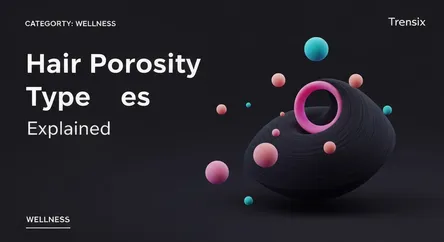Wellness
Hair Porosity Types Explained

Understand your hair's ability to absorb moisture. Learn about low, medium, and high porosity to find the right products for healthier hair.
What is it?
Hair porosity refers to your hair's ability to absorb and retain moisture. This is determined by the structure of the hair's outer layer, called the cuticle, which is made up of overlapping scales. There are three main types of hair porosity: low, medium, and high.
Low Porosity: The cuticles are tightly packed and lie flat, making it difficult for moisture to penetrate the hair shaft. Products may sit on the hair rather than being absorbed.
Medium Porosity: The cuticles are less tightly bound, allowing moisture to penetrate and be retained effectively. This type is generally considered the easiest to manage.
High Porosity: The cuticles are widely spaced with gaps, allowing hair to absorb moisture quickly but also lose it just as fast. This can be genetic or caused by damage from chemical treatments and heat styling.
Why is it trending?
Understanding hair porosity has become a popular topic in beauty and wellness because it is key to effective hair care. People are realizing that knowing their porosity level allows them to choose the right products and create a customized routine that actually works. This knowledge helps solve common hair issues like dryness, frizz, and product buildup. Instead of focusing only on hair type (like curly or straight), considering porosity provides a more nuanced approach to achieving healthy, manageable hair, saving time and money on ineffective products.
How does it affect people?
A person's hair porosity directly impacts their daily hair care routine and product selection. For those with low porosity hair, using lightweight, water-based products and applying gentle heat can help open the cuticles to absorb moisture. They often need to avoid heavy creams and oils that cause buildup. Conversely, individuals with high porosity hair benefit from using anti-humectants, leave-in conditioners, and heavier butters or oils to seal in the moisture that is easily lost. Knowing their type helps people manage concerns like breakage in high porosity hair or buildup in low porosity hair, leading to healthier and more predictable results.